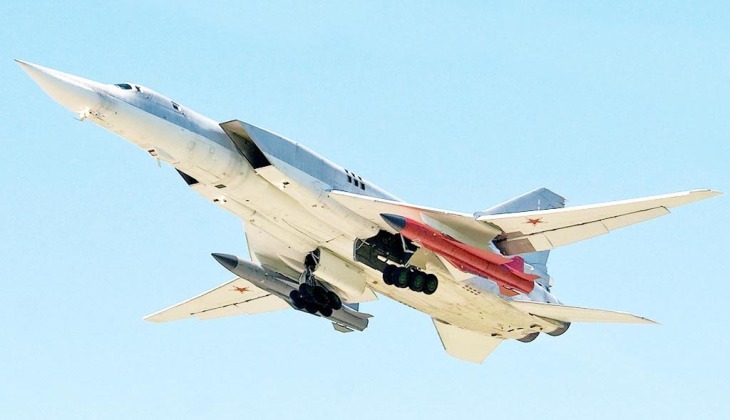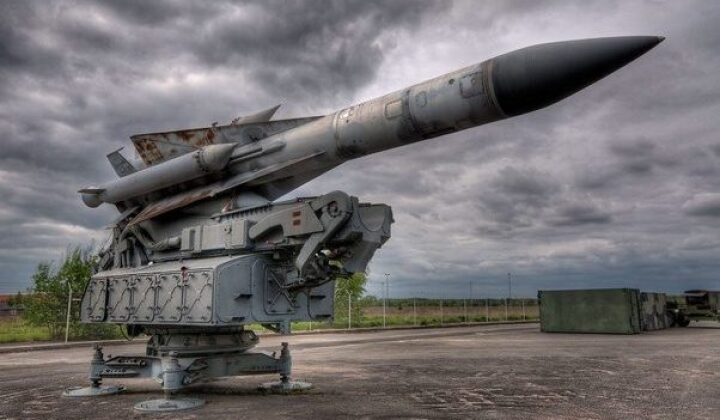On April 19 the Russian Air Force lost a Tu-22M3 strategic bomber during operations in the Ukrainian theatre, with the aircraft’s crash and ejection of its three crewmen confirmed by multiple Russian sources. The incident was subsequently credited by Western and Ukrainian sources to a shootdown by a Soviet S-200 air defence system. The Tu-22M3 has played a central role in Russian missile strikes against Ukrainian targets since mid-2022, primarily using Soviet Kh-22 cruise missiles, which Ukrainian sources have repeatedly confirmed their air defences have never been able to shoot down. Over 300 of these missiles had been launched by December 2023, and they have been favoured not only for their complex flight profiles, long ranges and large explosives payloads, but also for the fact that they were inherited in tremendous quantities from the Soviet Union allowing them to expended in high quantities. The shooting down of a Tu-22M3 represents one of the most significant successes Ukraine has had in the aerial domain since the beginning of the war, with the very steep technological disadvantage facing the country’s fighter fleet forcing it to rely heavily on ground based air defence systems to threaten Russian aircraft.

The S-200 system was notably not in service in the Ukrainian Air Force when open hostilities with Russia broke out in February 2022, but the systems are reported to have either been brought out of storage or sent as aid from Poland which still relied on the heavily for its own defence. As well as air defence operations, S-200s have also been employed to fire their V-880 missiles ballistically into Russian held population centres, with these missiles being larger and having longer ranges than most short range ballistic missiles such as the Scud-B. Although the S-200 was one of the most capable air defence systems deployed during the Cold War, it did not see widespread use in combat due to its limited export outside the Warsaw Pact with only Syria and North Korea acquiring them in the 1980s. The systems were designed to protect high value targets from all types of air attack, serving as higher end and longer ranged counterparts to the more widely used S-75 system which entered service from 1957 and saw widespread use in the Vietnam War and the Arab-Israeli wars. The first S-200 units became active nine years later from 1966, with very significant improvements to performance made over the next 15 years.

The S-200’s characteristics in several respects remain outstanding even close to 60 years after its service entry, largely due to the sheer size of its surface to air missiles. The S-200D fires missiles with flight ceilings of up to 40km, contributing to its ability to engage short, medium and intermediate range ballistic missiles travelling at up to Mach 6, as well as SR-71 reconnaissance aircraft. The system had a detection range of up to 600 kilometres and the ability to search for targets in space at altitudes of over 45,000 metres, optimising them for ballistic missile defence, with an outstanding a 300km engagement range and a 217kg high-explosive fragmentation warhead. The S-200 was phased out of service from the 1990s as new variants of the S-300 system, the S-300PM series, boasted significantly enhanced ranges of over 200 kilometres and introduced superior ballistic missile defence capabilities. Having obtained improved performance characteristics, the S-300’s more sophisticated electronics and, most importantly, its high mobility, made it favourable over stationary S-200 launch sites. Unlike Russia and clients for post-Soviet Russian air defence assets such as India and Belarus, Ukraine lacks modern S-300 variants which leaves the S-200 as by far its longest ranged anti aircraft asset. The S-200 formed the backbone of Soviet air defences during late Cold War years, with the inventory peaking at 130 sites and 2,030 launchers near the end of the conflict. Its lack of prior significant combat use makes the system’s deployment in Ukraine the most significant test of its combat potential.
